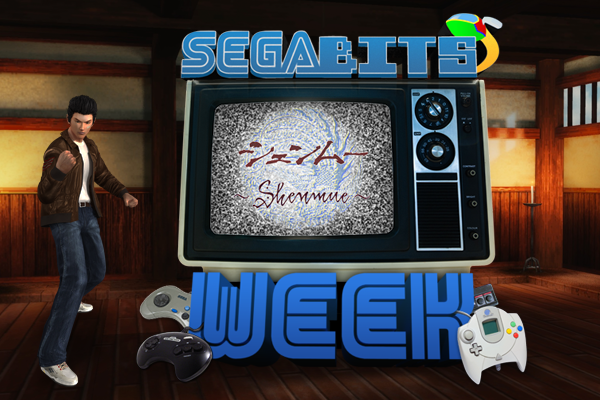
Welcome to a franchise week that many readers have been requesting ever since we began to dedicate seven days to classic SEGA titles, this is Shenmue Week! Like Jet Set Radio Week, we’re going focus exclusively on the first game of the franchise throughout the week. While Shenmue and its sequel are not incredibly different games from each other like Jet Set Radio and Jet Set Radio Future, we felt that both Shenmue titles are both so epic on their own that to try and cram both into seven days would do a disservice to the series. Not to mention, we love Shenmue so much that the prospect of another Shenmue Week in the future is something we’re looking forward to.
But I’m getting ahead of myself. Let’s travel back in time, before Shenmue II and before the original Shenmue. Before the series went by the codename Project Berkley, to a time in the mid 90s when SEGA’s Yu Suzuki was working on a SEGA Saturn prototype known as The Old Man and the Peach Tree.
He shall appear from a far eastern land across the sea…
Every epic story starts with a small seed of an idea, and for SEGA’s Yu Suzuki that seed was The Old Man and the Peach Tree. You could say that Suzuki’s many efforts at AM2, from Champion Boxing and OutRun to the Virtua Fighter series, were Suzuki’s stepping stones for the creation of Shenmue. But the Saturn prototype The Old Man and the Peach Tree was when Suzuki began to bring his ideas for Shenmue to life. During a postmortem for Shenmue at 2014 Game Developers Conference, Suzuki revealed the origins of the series, explaining that he began to research RPGs through his The Old Man and the Peach Tree prototype. The prototype allowed the team to experiment with camera movement, character controls, a conversation system, and combat.
The gameplay of the prototype was simple, players would approach an old man and start a conversation asking about a Kung Fu master named Ryu. The old man replies that he will only tell the player (named Taro) where Ryu is if he is brought a peach. As the prototype comes to an end, the old man performs the amazing ability to skip stones across a pond, killing a fish each time the stone hits the surface of the water, teasing the player with the notion that the old man just might be Ryu. While the story of The Old Man and the Peach Tree has no connection to the Shenmue storyline, it encapsulates much of what defines Shenmue. The basic gameplay elements are all there, and many of the themes found within the games are present.
Beginning in 1996, Suzuki and his team began to build the world of Shenmue on the Saturn. The goal was to create a fully voice acted RPG with a much more cinematic approach to scenes both playable and non-playable. Combat would be in real time and would support multiple opponents, utilizing AM2’s own Virtua Fighter engine. Initially, the game was to be a Virtua Fighter RPG starring Akira, but after a trip to China to study potential settings and real world martial arts, Suzuki returned and stripped the story of the Virtua Fighter elements. The development team expanded with the inclusion of several screenwriters and directors with film experience, and tasked them with writing a story that was free from the confines of having the story follow pre-set gameplay elements. The result was an eleven chapter story following a young man named Ryo Hazuki on a quest for vengeance against a man named Lan Di, who had murdered Ryo’s father Iwao Hazuki. Ryo’s journey begins in his small hometown of Yokosuka, and expands to the cities and wilderness of China.
As development for the game continued, and its scope increased, Suzuki decided to shift development of the game to SEGA’s next console the Dreamcast. Suzuki’s goal was a game that consisted of: five hours of cutscenes, four hours of battles, four hours of finding items to aid Ryo’s quest, eight hours of exploration and conversation with NPCs, four hours of studying martial arts, four hours in dungeons, and four hours of traveling between worlds. The result would have been a 45 hour RPG, something that Suzuki described as a “game that could be played for a long time without getting tired of gameplay.”
As the Dreamcast’s release loomed, Suzuki began to finalize his plans and decided to release Shenmue episodically, with the first title covering the first chapter in the story, basing the entire story in Ryo’s hometown of Yokosuka. The following chapters of the story would release on the Dreamcast, with some games covering more than one chapter. Interestingly, while Suzuki initially mapped out 11 chapters, in later years it was revealed that the game had ballooned to 16 chapters, with the first Shenmue covering chapter 1, chapter 2 was covered in a manga chronicling Ryo’s journey to China, and Shenmue II covered chapters 3 through 5. The planned Shenmue III would cover an unknown number of additional chapters, leading to speculation of a Shenmue IV to follow, but in recent years Suzuki has stated that a third game would wrap up the series. But again, I’m getting ahead of myself. Let’s take a look at the game that Started it all…
Hang-on… 100 yen a game. I’ll try it.
Unlike the sequel, the first Shenmue was a relatively small game. You had the Hazuki residence, the neighborhood, Yokosuka’s main street, and the harbor to explore. The player’s goal, to find Lan Di, was simple yet powerful thanks to an excellent opening cutscene, and while the player never did confront Lan Di through to the end of the game, there was a diverse cast of enemies impeding Ryo’s search for the killer of his father. The most memorable aspect of the game, however, are the many eccentric NPCs, collectables, and mini-games that littered Yokosuka. Characters like Goro Mihashi and Tom Johnson brought plenty of levity and several memorable quotes to the story, and item collecting and the ability to play real SEGA arcade games was addicting.
The mixture of a serious story combined with the oddball characters and several mini-games and diversions created a strange juxtaposition. Some might argue that it hampered the more serious sides of the game, but this mix contributed to much of its charm and gave the game a unique and memorable identity. An additional element to the game, at least in Western territories, was the American dub which (as later interviews would reveal) didn’t go as smoothly as it should have, with actors being cast based on looks rather than voice talent and being tasked with playing more characters than they were prepared for. This lead to several unintentionally funny lines that, for better or worse, are often quoted and appropriated into news stories whenever the game is brought up – sailors anyone?
The first Shenmue is a lot of things. It is the result of years of hard work on Suzuki and his team’s behalf. It is a time capsule from a fictional 1986, featuring not only one man’s quest to find his father’s killer, but also a cast of dozens upon dozens of fleshed out NPCs with their own day to day lives. It is a collection of addicting mini-games and collectibles. It is a game that attempted to push the SEGA Dreamcast to its limits, and it is an incredibly unique experience that, outside of the sequel, has never been truly replicated.
The Games
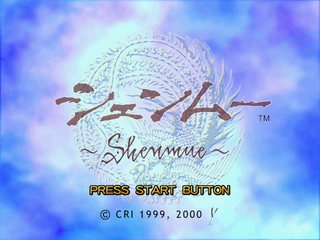 Shenmue, called Shenmue: Ichishou Yokosuka (シェンムー 一章 横須賀) in Japan, is an adventure game developed by AM2 and published by Sega for the Sega Dreamcast, produced and directed by Yu Suzuki. Suzuki coined a new genre title, “F.R.E.E.” (Full Reactive Eyes Entertainment), for the game, based on its unparalleled interactivity and freedom, as well as the innovative real-time and weather systems. Shenmue was followed by a sequel, Shenmue II. Learn more at SEGA Retro
Shenmue, called Shenmue: Ichishou Yokosuka (シェンムー 一章 横須賀) in Japan, is an adventure game developed by AM2 and published by Sega for the Sega Dreamcast, produced and directed by Yu Suzuki. Suzuki coined a new genre title, “F.R.E.E.” (Full Reactive Eyes Entertainment), for the game, based on its unparalleled interactivity and freedom, as well as the innovative real-time and weather systems. Shenmue was followed by a sequel, Shenmue II. Learn more at SEGA Retro
 Shenmue II (シェンムー II) is an Adventure game for the Sega Dreamcast and Xbox game consoles. It is the sequel to Shenmue, and was produced and directed by Yu Suzuki of AM2. Due to exclusivity rights obtained by Microsoft, the Dreamcast version of the game was not released in North America.
Shenmue II (シェンムー II) is an Adventure game for the Sega Dreamcast and Xbox game consoles. It is the sequel to Shenmue, and was produced and directed by Yu Suzuki of AM2. Due to exclusivity rights obtained by Microsoft, the Dreamcast version of the game was not released in North America.
Unlike the first game of the series, no English Dubbing was recorded for the Dreamcast version of Shenmue II, and the European release included subtitles. The later Xbox version included an English dub, and was not released in Japan. Shenmue II incorporates four chapters of the Shenmue saga. Learn more at SEGA Retro
 Shenmue Online (シェンムーオンライン「莎木OL」, Shenmū Onrain) was an announced MMORPG where players participate in scenarios from Shenmue II, joining one of three clans, led by Shen Hua, Xiu Ying, and Wu Ying Ren, all significant characters from the story.
Shenmue Online (シェンムーオンライン「莎木OL」, Shenmū Onrain) was an announced MMORPG where players participate in scenarios from Shenmue II, joining one of three clans, led by Shen Hua, Xiu Ying, and Wu Ying Ren, all significant characters from the story.
Learn more at Shenmue Dojo
 Shenmue City (シェンムー街 Shenmū Machi) is a game in the Shenmue series released for smartphones in Japan. The game was conceived as a way of relaunching the game franchise by series creator Yu Suzuki. It was announced in late 2010 for cell phones and also for PCs, but only a cell phone version was released. The game was discontinued in late 2011.
Shenmue City (シェンムー街 Shenmū Machi) is a game in the Shenmue series released for smartphones in Japan. The game was conceived as a way of relaunching the game franchise by series creator Yu Suzuki. It was announced in late 2010 for cell phones and also for PCs, but only a cell phone version was released. The game was discontinued in late 2011.
Learn more at Wikipedia
 Sonic & Sega All-Stars Racing (ソニック&セガオールスターズ レーシング) is a racing game developed by Sumo Digital. It stars characters from a wide range of Sega games, similar to the previously released Sega Superstars Tennis, also by Sumo Digital. Unlike Sega Superstars Tennis, Sonic & Sega All-Stars Racing is more skewed towards the Sonic the Hedgehog franchise, with roughly half the tracks based on the series and approximately one third of the characters.
Sonic & Sega All-Stars Racing (ソニック&セガオールスターズ レーシング) is a racing game developed by Sumo Digital. It stars characters from a wide range of Sega games, similar to the previously released Sega Superstars Tennis, also by Sumo Digital. Unlike Sega Superstars Tennis, Sonic & Sega All-Stars Racing is more skewed towards the Sonic the Hedgehog franchise, with roughly half the tracks based on the series and approximately one third of the characters.
Ryo Hazuki was a part of the game’s roster, riding his friend Naoyuki’s motorcycle. His special move, Working Man, featured Ryo swapping out his motorcycle for a forklift which allowed him to lift rival racers out of his way. DLC allowed players to race as Ryo with the forklift as his default vehicle. Learn more at Sonic Retro
 Sonic & All-Stars Racing Transformed was announced on April 30, 2012. It is the sequel to Sonic & Sega All-Stars Racing and was directed by Gareth Wilson, the former lead designer of Blur, a similar racing game that also uses power-ups as a prominent feature. It was released on the consoles Xbox 360, PlayStation 3, Wii U, and PS Vita in late 2012, Steam and 3DS in early 2013, and iOS and Android in early 2014. The game was released in Japan on PS3 and Wii U on May 15, 2014.
Sonic & All-Stars Racing Transformed was announced on April 30, 2012. It is the sequel to Sonic & Sega All-Stars Racing and was directed by Gareth Wilson, the former lead designer of Blur, a similar racing game that also uses power-ups as a prominent feature. It was released on the consoles Xbox 360, PlayStation 3, Wii U, and PS Vita in late 2012, Steam and 3DS in early 2013, and iOS and Android in early 2014. The game was released in Japan on PS3 and Wii U on May 15, 2014.
While Ryo Hazuki did not initially return as a member of the roster, the character did cameo as a large holographic statue in the game’s final track. Later, for as DLC for the PC release and as an exclusive to the iOS release of the game, Ryo Hazuki returned in a vehicle that featured three modes: an Outrun arcade machine land vehicle, an After Burner arcade machine air vehicle, and a Hang-On arcade machine jet ski. Ryo’s All-Star move featured forklifts that encircled him and hit passing racers. Learn more at Sonic Retro
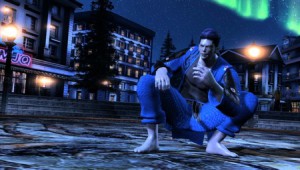 Virtua Fighter 5 (バーチャファイター5) is a fighting game developed by Sega AM2 for the Sega Lindbergh arcade platform. It is the fifth game in the Virtua Fighter series and a sequel to Virtua Fighter 4. The arcade version was only released in Japan, however it received home conversions for the PlayStation 3 and Xbox 360 which were released internationally.
Virtua Fighter 5 (バーチャファイター5) is a fighting game developed by Sega AM2 for the Sega Lindbergh arcade platform. It is the fifth game in the Virtua Fighter series and a sequel to Virtua Fighter 4. The arcade version was only released in Japan, however it received home conversions for the PlayStation 3 and Xbox 360 which were released internationally.
While Virtua Fighter 5 does not feature any Shenmue characters, the game does have a reference to the series by way of a background element – Yokosuka’s own MJQ Jazz Bar. Learn more at SEGA Retro
Shenmue III and beyond
While this week’s primary focus is the first game of the series, since the release of the second game there has been the question of “Will there be a Shenmue III?”. And honestly? We don’t know. As evidenced, the full story has been scripted and mapped out. Yu Suzuki has said again and again that he wants to complete the series, and SEGA has not completely abandoned the IP as seen in recent cameos and releases of First 4 Figures and Insert Coin Clothing merchandise. The major hurdle is the cost to make such a game, and the question of whether SEGA will make a return on their investment. While die-hard fans will buy a third Shenmue with no question, would such a game prove popular with the general public? Sales of the past two titles proved that the Shenmue franchise can be a risk. It’s a complicated situation for both SEGA and Shenmue fans, which has lead to both sides butting heads on more than one occasion.
While there are many vocal fans who cross the line of decency to get their message across to SEGA – come on guys, swearing, personal attacks, and trashing other franchises is not the answer – there are several fans who are going about things the right way. The Team Yu project is a fan run campaign dedicated to uniting fans of the Shenmue series in an effort to Save Shenmue through Twitter tweetathons on the 3rd of each month. ShenmueDojo.net is a long-standing fansite for the franchise, serving as a information hub for the games as well as a place for fans to congregate and discuss the series. Their collection of Shenmue III information is a must read for fans who want to know more of what Suzuki and his team have planned for the finale.
We’re excited to see where Shenmue Week takes us – let’s get sweaty!
Ad:
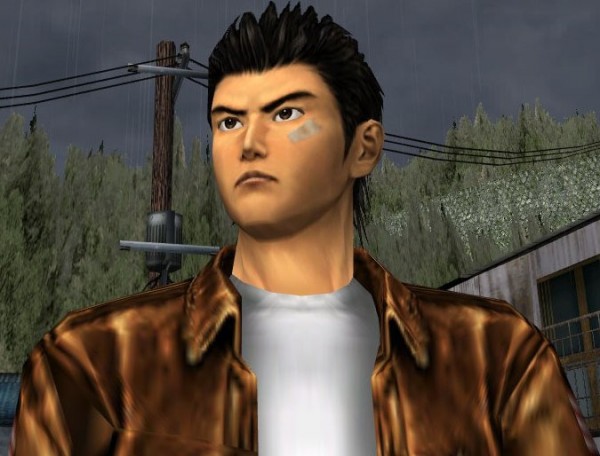
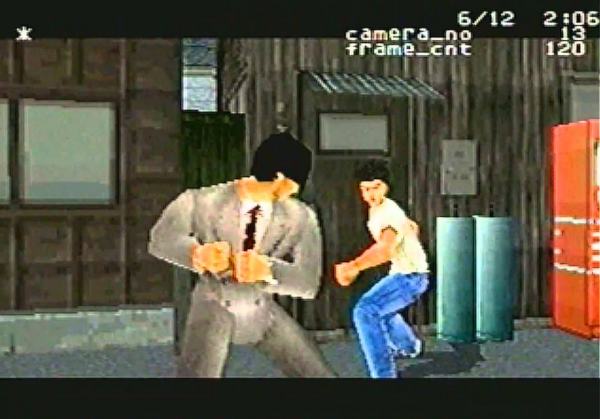
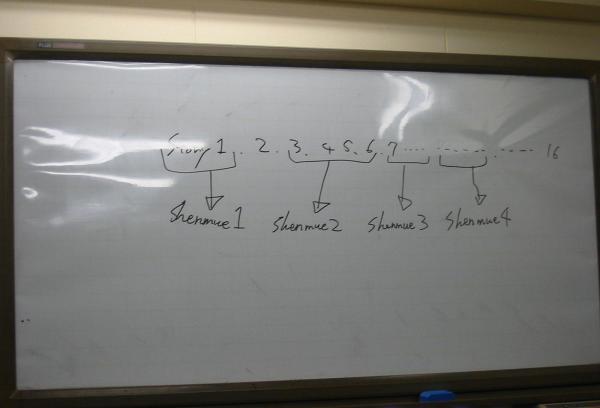
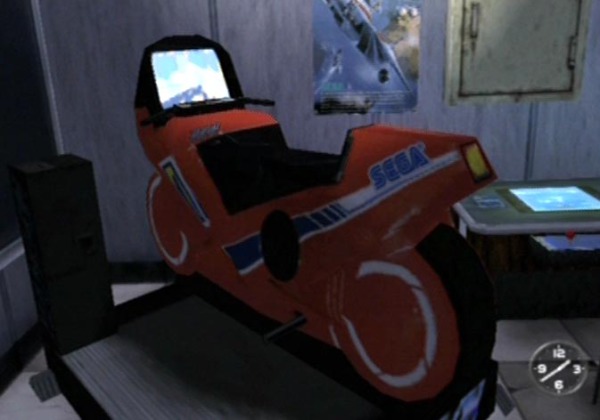
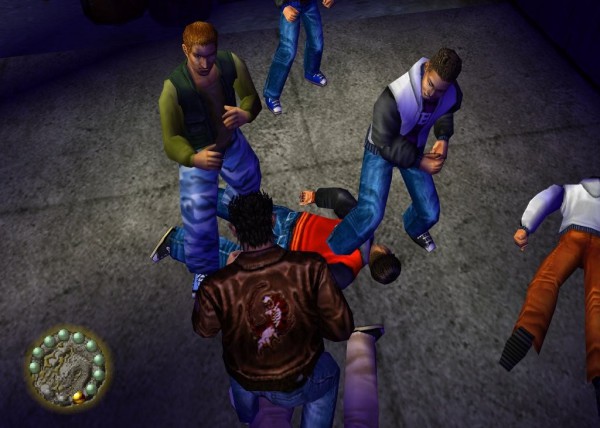
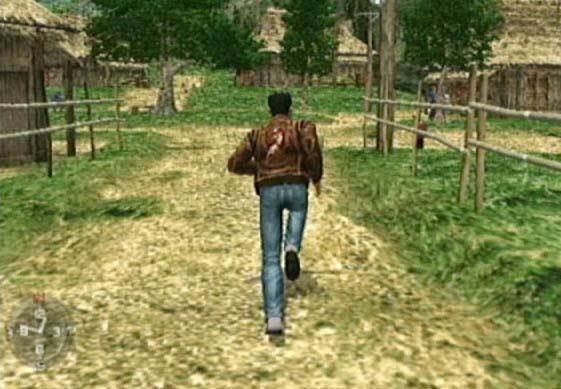



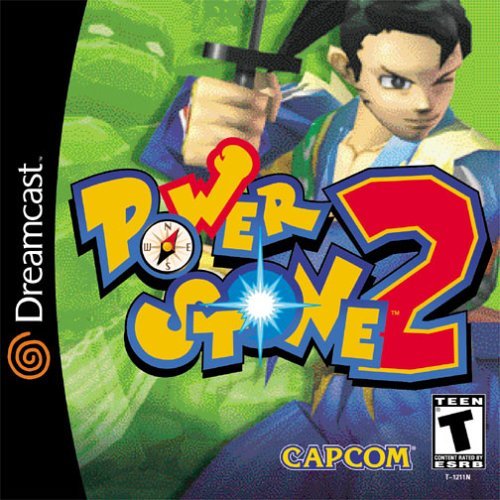
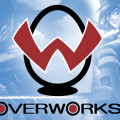
Great article!!!
Everytime I drive my forklift at work, I have music from this amazing series playing in my head! I love Shenmue!
@Winggundamzero – I would hope you have races every morning and your boss hands out little forklifts as awards!
niceeeeeeeeeeee
When you consider that the Dreamcast sold over 10 million units worldwide, I’d have expected both Shenmue games to have sold better. Somehow, I think it would’ve sold poorly no matter how many people owned a Dreamcast. Even Shenmue on the PS2 probably would’ve struggled. After the Dreamcast, SEGA died. You could say that SEGA had its chance with Shenmue 3 when the PS2 was flying high. And there’s no getting away from the fact that Yakuza is a Shenmue clone. Playing a number of Yakuza games on the PS2 and PS3, they’re nowhere near as good as Shenmue. I’m not sure how well they sell, but I’m guessing they just about make the grade in Japan, but not in the US and Europe. SEGA hasn’t released a big hitter for years and years. Shenmue 3 on the PS4 is probably SEGA’s best bet. All those awful Yakuza games, there’s no excuses. But SEGA doesn’t have the ability to pull off classic games anymore. The amount of crap to average games SEGA releases these days (more so Sonic games), Shenmue 3 on the PS4 could bring them back from the dead.
One of my main dudes (fungo) is playing and commentating on the first game in great depth about a week ago, and this is the first time I’ve actually experienced the game. It’s actually very interesting and unique. (His channel if anyone is interested: http://youtu.be/g5XWp70SLjM?list=PL13x7QLkOwQsJhrLSQf7ChHZiqNQNvteH )
The only game I played that comes close to what I’ve seen so far is Deadly Premonition. That was my Shenmue lol
Slick article, keep up the good work
ahh Deadly Premonition!! thats my second favorite game!! first is shenmue! but DP when i got a lesson in squirrels from thomas, i was hooked… Fantastic game!!!
Nice read. 😉
Why not re-release both games 1 @ 2 in HD on all consoles. bet Sega will see those profits go up !!!!! Clockwork Knight can be another title to release in HD !!! somebody at Sega isn’t doing their homework when it comes to us in America !!!!!!